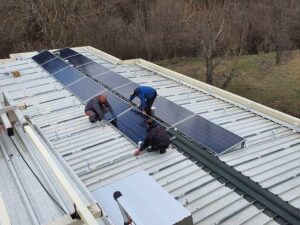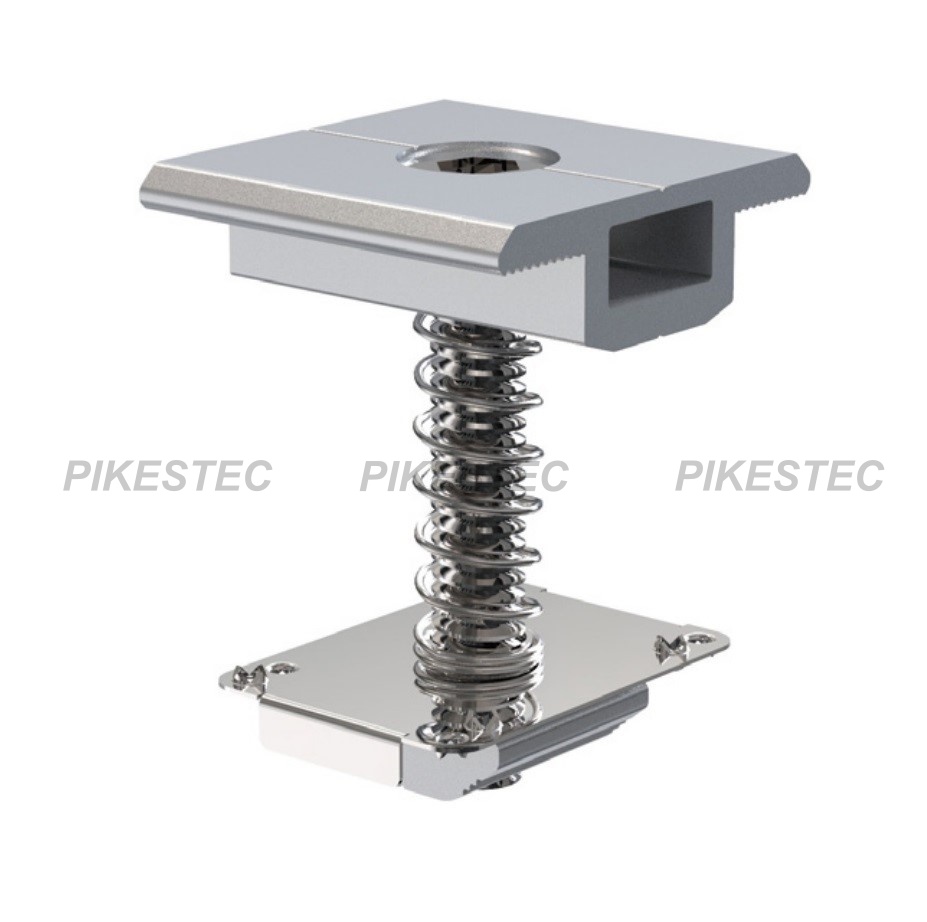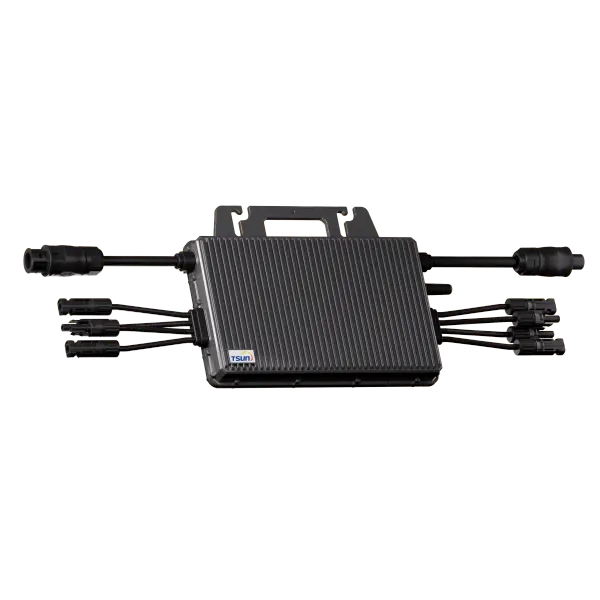Bulgaria Commissions 15 kW Tilt-Roof Solar Project Using Modern Tilt Roof System
Bulgaria has just commissioned a 15 kW rooftop photovoltaic system installed on a pitched (tilt) roof using an optimized tilt-roof mounting system. The project—designed for residential / small-commercial self-consumption—combines precision tilt geometry, corrosion-resistant rails, and modern päikesepaneelide klambrid to deliver reliable output, improved roof integration, and quicker installation times.
Note: this project arrives as Bulgaria’s solar market is rapidly expanding, driven by policy reforms and a surge of commercial and rooftop deployments across the country.
What Was Installed and Why It Matters
-
Capacity & Scope: 15 kW total installed capacity using 375–410 W bifacial/mono-PERC modules (module model varies by EPC).
-
Mounting Solution: a tilt-roof racking solution with adjustable tilt angles for seasonal optimization, stainless fasteners, anodized aluminum rails, and engineered päikesepaneelide klambrid (mid-clamps / end-clamps) to ensure secure module fixation.
-
Roof Type: pitched tile roof (ceramic/concrete tiles) with T-hook or L-foot interface depending on tile profile; all hooks/seal interfaces were installed to preserve waterproofing.
-
Performance Expectation: a well-positioned 15 kW system in Bulgaria typically yields strong year-round performance—estimated annual production in the range of 16,000–18,500 kWh depending on tilt, azimuth and shading—enough to offset a large share of a multi-family household or small business’s consumption and reduce grid imports. (Local irradiance and orientation determine the final figure.)
These mid-sized rooftop projects are increasingly important as Bulgaria scales up solar deployment; distributed systems reduce grid stress and accelerate decarbonization at the building level.

Technical Details — Tilt Optimization, Brackets, and Durability
A few technical design choices made this installation robust and future-ready:
-
Tilt angle & layout: The racking system was configured with an optimized tilt (e.g., 20°–30° depending on roof pitch) that balances summer peak generation and winter yield—improving annual energy capture and maximizing self-consumption.
-
Solar panel brackets & rails: Precision päikesepaneelide klambrid (mid clamps, end clamps, and adjustable mounting feet) were used to clamp panels firmly to the rails while enabling thermal movement. High-quality anodized aluminum rails and stainless steel bolts (SUS304/SUS316 where required) were selected for longevity.
-
Waterproofing & roof integrity: Tile hooks / L-feet were installed with waterproof flashing and sealants to minimize penetrations and protect the roof membrane—best practice for preserving warranty and avoiding leaks.
-
Monitoring & inverter choice: A string inverter with module-level power electronics (where used) and an online monitoring platform were included to track performance, quickly detect under-performance, and validate the project ROI.
Mounting system quality is now a significant market differentiator: the global solar mounting market continues to grow as installations scale and customers demand durable, low-maintenance solutions.
Why This Project Fits Current Solar Industry Hotspots
The project aligns with multiple trending topics in the solar industry:
-
Distributed generation & energy independence: Small/medium rooftop systems like this 15 kW deployment let homeowners and SMEs cut energy bills and reduce exposure to volatile wholesale prices.
-
Fast rooftop rollouts in Bulgaria: Bulgaria is adding substantial solar capacity and is forecast to keep accelerating installations—making residential and C&I rooftop projects meaningful contributors to national targets.
-
Quality of mounting & productization: Buyers increasingly emphasize proven components—durable päikesepaneelide klambrid, corrosion-resistant rails, and standardized roof interfaces—because long-term reliability and low O&M costs matter more than ever.
-
Integration with storage & smart management: Though this project is primarily PV, the racking and inverter choices are BESS-ready so owners can add batteries later to increase self-consumption and backup capability—a common market trend.
Social & Environmental Impacts
-
Carbon reduction: A 15 kW rooftop PV system in Bulgaria can avoid several tons of CO₂ annually compared to grid electricity—contributing to homeowner sustainability goals.
-
Economic relief: By cutting imported electricity during peak hours and reducing bills, these systems help households and SMEs improve resilience to price shocks.
-
Local workforce & know-how: Installation supported local EPC contractors and roofers, transferring skills in proper mounting, sealing, and monitoring—important for a maturing national solar market.
Challenges & Lessons Learned
-
Roof survey is essential: Pre-installation structural and shading surveys prevented rework and ensured the roof could carry module and wind/snow loads.
-
Waterproofing discipline: Even small mistakes at hook/flashing points can lead to costly leaks—use certified roofers and tested sealing methods.
-
Component traceability: Track serial numbers for panels, inverters and päikesepaneelide klambrid —this simplifies warranty claims and O&M.
-
Future-proofing: Design for battery retrofits and possible repowering to extend asset life.
Outlook — Replication Potential in Bulgaria & the Region
This 15 kW tilt-roof project is a replicable template for thousands of similar rooftops across Bulgaria and neighboring markets. As policy support, grid integration frameworks, and cost-competitiveness improve, expect the proliferation of well-installed tilt-roof PV systems that prioritize päikesepaneelide klambrid quality, roof preservation, and modularity for storage add-ons. Market reports indicate the PV mounting sector continues to expand as installations rise globally—supporting more robust, standardized products.




